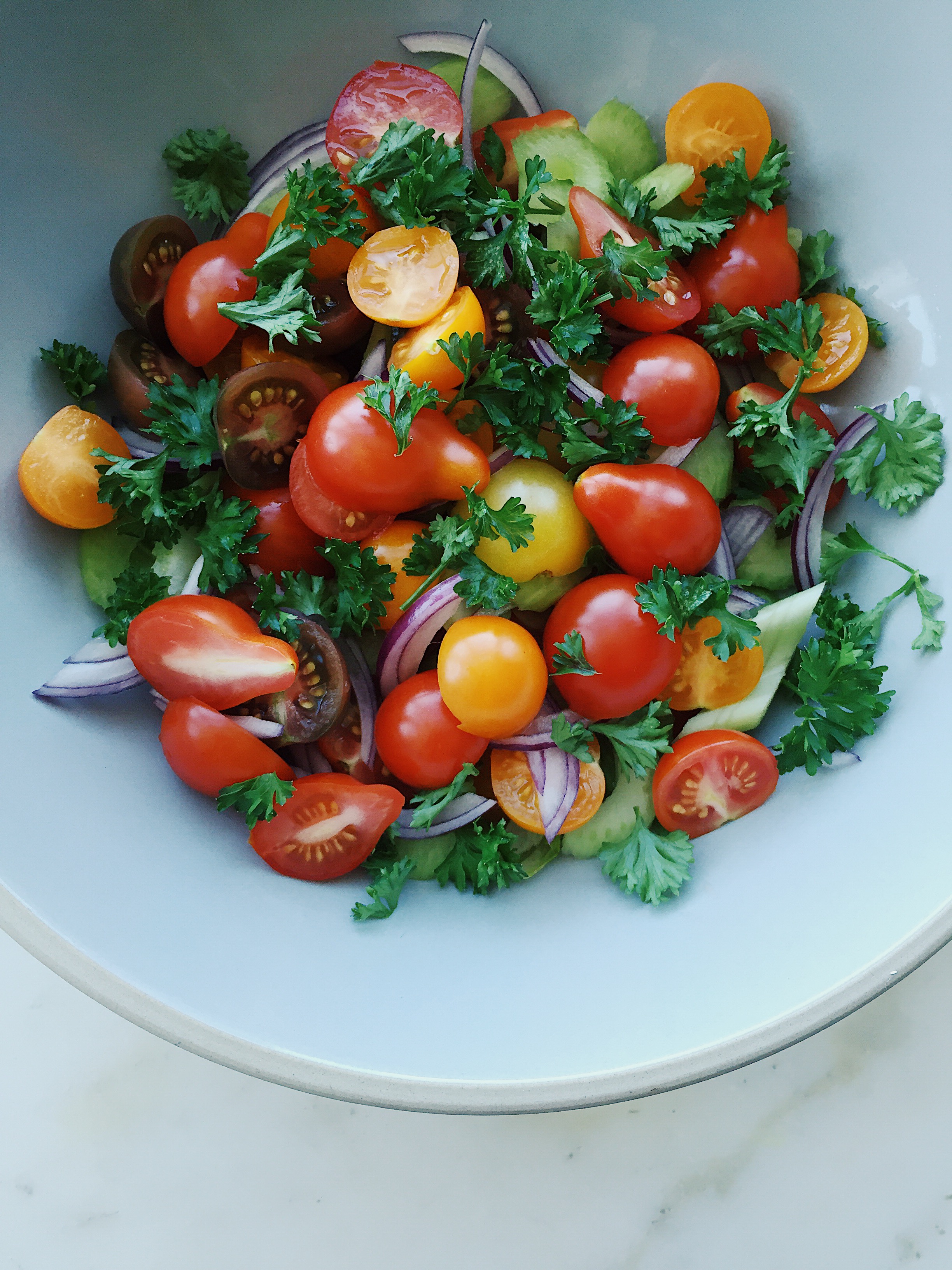A Few Tips for Starting a Vegetable Garden
Do you grow vegetables? My husband and I started a small garden patch a few years ago, and it’s been a very rewarding (albeit occasionally maddening) hobby. It’s such a great feeling to tuck into veggies you’ve grown yourself and picked at their peak of ripeness. The salad pictured above was made last summer when we were swimming in garden tomatoes - a truly wonderful time.
While I still consider myself a beginner, I thought I’d share a few tips I’ve picked up over the years, in case you’d like to try your hand at growing a few veggies, too. And please know that you don’t need a backyard to get started. You can grow a few pots on a sunny windowsill or balcony, get a spot at your local community garden, or do what we did, and strike a deal with someone you know who has an underused backyard.
Buy a mix of seeds and seedlings: Some veggies are easy to grow from seed, but some are so much easier to start in the garden as a seedling. For us this means that we usually grown lettuce, kale and beans from seed, but purchase tomatoes and certain herbs as seedlings. We usually order organic seeds online, and buy our seedlings from a local farm.
Grow things you like to eat raw: This might seem like a funny one, but I really don’t like turning on the oven in the summertime, and there are some veggies that I prefer not to eat raw. Chard and beets are both vegetables that I prefer cooked, but I love kale and lettuce salads, so we grown a lot of both of those. Tomatoes are also a favourite for this reason, and we eat our fair share of tomato sandwiches in the summertime.
Plant things that will be ready at different times: Or if I’m honest, don’t grow things that take a very long time to be ready. This is a personal preference, but we’ve tried growing certain vegetables (squash and cabbage, I’m looking at you) that took up a lot of space in the garden beds, and took forever to be ready. All I kept thinking about is how many lettuce heads we would have been able to harvest in that amount of space and time. Also, if you’re growing something like tomatoes, know that some smaller varieties will be ready in early summer, while some will take many months to produce ripe fruit. If you purchase different varieties, you’ll be able to enjoy tomatoes for a longer period of time.
Soil quality matters: You will likely have to add some nutrients to your soil to make sure it has what it needs to grow healthy vegetables. We usually add manure in the fall, and mushroom compost in the spring. Soil that is lacking in nutrients will not grow good vegetables, so please be sure to do your research and spend a bit extra on a few soil amendments that can make all the difference.
Protect your veggies (or be prepared to share): So many creatures will be interested in your veggies, and you need to be proactive about protecting them. We built some simple panels with wood and chicken wire that we can use to protect our plants from curious squirrels and skunks. We also learned that during dry spells, critters may be attracted to your produce because it contains water, so having a small bird bath or water bowl nearby can sometimes act as a deterrent. These methods haven’t been foolproof, but they have kept critters away up to a certain point.





